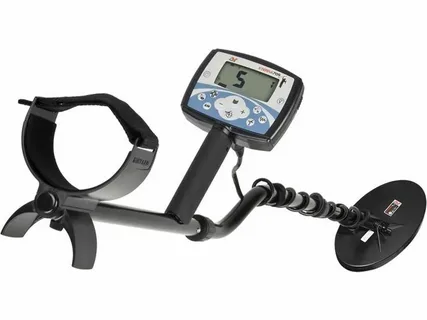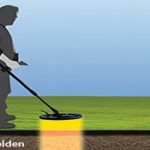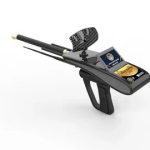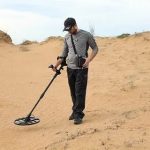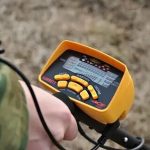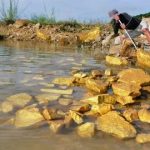Gold Finding Tools: Discover the Best for Your Next Adventure
Are you ready to embark on an exciting gold prospecting adventure? Whether you’re a seasoned prospector or a novice looking to strike it rich, having the right tools is essential for success. In this guide, we will explore the best gold finding tools on the market, from metal detectors and sluice boxes to gold pans and more. With the right equipment in hand, you’ll be well-equipped to uncover hidden treasures and make the most of your next gold hunting expedition.
Discover the Best Gold Finding Tools for Your Next Adventure discusses the various tools and equipment necessary for successful gold prospecting. The article delves into the different types of metal detectors, pans, and sluice boxes that are commonly used by gold hunters. It also offers tips on how to use these tools effectively and provides insights on where to find the best equipment for your gold prospecting needs. Whether you’re a beginner or a seasoned prospector, this comprehensive guide can help you optimize your gold-finding journey.
The Essential Gold Finding Tools Every Prospector Needs
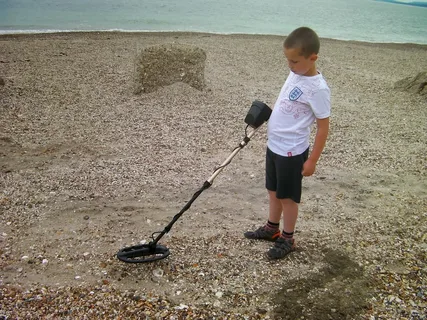
The essential gold finding tools every prospector needs include a metal detector, a gold pan, a shovel, a classifier, and a snuffer bottle.
A metal detector is crucial for locating gold nuggets and other metal targets beneath the surface. A gold pan is used for sifting through sediment and water to separate gold from other materials.
A shovel is necessary for digging and moving dirt and rock, while a classifier helps separate larger rocks and debris from finer materials. A snuffer bottle is used to collect and store small gold particles that may be difficult to pick up by hand.
These tools are essential for any prospector looking to find and extract gold from the earth.
Top 10 Must-Have Gold Finding Tools for Beginners
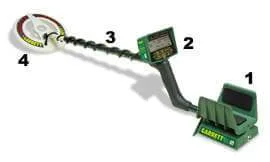
1. Gold Pan – This is the most essential tool for gold prospecting. It is used to separate gold from gravel and sediment.
2. Sluice Box – A sluice box is a long, narrow box with riffles that trap gold as water flows through it. It can process larger amounts of material than a gold pan.
3. Metal Detector – A metal detector can help you locate gold nuggets and other metal deposits hidden beneath the ground.
4. Classifier Screens – These are used to filter out larger rocks and debris, allowing you to focus on the smaller, potentially gold-bearing material.
5. Magnifying Loupe – A magnifying loupe can help you inspect small particles and identify potential gold deposits.
6. Trowel and Shovel – These tools are used for digging and excavating potential gold-bearing areas.
7. Gold Snuffer Bottle – This tool is used to suck up small gold flakes and dust for easy collection.
8. Gold Mining Books – Reading up on gold prospecting techniques and tips can help beginners learn how to find gold more effectively.
9. GPS – A GPS device can help you navigate to known gold-bearing areas and keep track of your prospecting locations.
10. Safety Gear – It’s important to have the right safety gear including gloves, boots, and protective clothing when out in the field prospecting for gold.
Advanced Gold Finding Tools for Serious Treasure Hunters
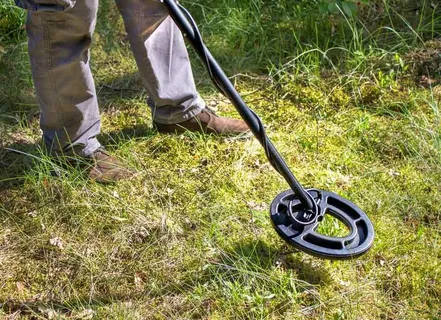
Advanced gold finding tools for serious treasure hunters include high-quality metal detectors with specific gold detection capabilities, such as advanced ground balancing, target identification, and sensitivity control. These tools may also feature advanced search coils designed for optimal gold detection in various ground conditions, as well as specialized search modes for targeting small, deep, or large gold objects.
In addition, advanced gold finding tools may incorporate GPS technology for accurate mapping of potential gold-rich areas, as well as high-resolution imaging and target analysis to pinpoint valuable gold deposits. These tools often come with advanced software and data management capabilities to track and analyze detected gold targets.
Furthermore, serious treasure hunters may benefit from additional accessories and equipment such as specialized gold pans, sluice boxes, and dredges designed for efficient gold recovery in rivers, streams, and other gold-bearing environments. These tools and equipment are designed to help serious treasure hunters maximize their chances of finding and retrieving gold treasures.
The Ultimate Guide to Selecting the Right Gold Finding Tools
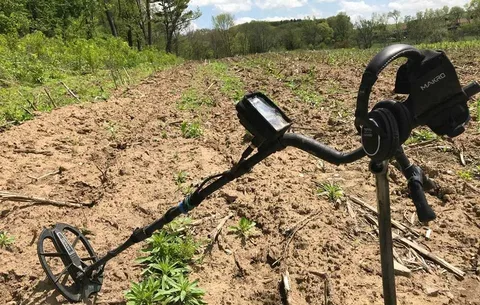
The Ultimate Guide to Selecting the Right Gold Finding Tools covers everything you need to know when choosing the best equipment for your gold prospecting adventures. The guide includes information on the different types of gold finding tools available, their features and specifications, as well as tips on how to evaluate and compare various options. Whether you’re a beginner or experienced prospector, this guide will help you make an informed decision and find the right tools for your needs.
Innovative Technology: The Future of Gold Finding Tools
See also: prospector tools
Innovative technology for gold finding tools includes advanced scanning and mapping systems, such as LIDAR and ground penetrating radar, which can detect underground mineral deposits with greater accuracy and efficiency. Additionally, machine learning algorithms and artificial intelligence have been incorporated into geophysical surveying equipment to improve the analysis of geological data and identify potential areas of interest for gold exploration. These technological advancements have the potential to revolutionize the way gold mining operations are conducted, leading to increased productivity and cost-effectiveness.
DIY Gold Finding Tools: How to Make Your Own Equipment
DIY gold finding tools can be made with simple materials and tools that are often found in a typical workshop. For example, a gold pan can be made by utilizing a shallow, wide container and adding ridges to help capture the gold particles. A snuffer bottle, which is used to suck up small gold flakes, can be made using a plastic bottle, a straw, and some adhesive. Additionally, a sluice box can also be constructed by using wood and metal riffles to help separate gold from other materials. By making your own gold finding equipment, you can save money and customize the tools to fit your specific needs.
The Best Accessories to Complement Your Gold Finding Tools
1. Gold Panning Kit: A good quality gold panning kit is an essential accessory to complement your gold finding tools. It typically includes a gold pan, classifier, snuffer bottle, and other tools necessary for efficient gold panning.
2. Metal Detector: A metal detector specifically designed for gold prospecting can greatly enhance the efficiency of your search. Look for a detector with advanced features such as ground balancing, target identification, and adjustable sensitivity to maximize your chances of finding gold nuggets.
3. Gold Prospecting Gloves: A durable pair of gloves designed for gold prospecting can protect your hands from sharp rocks, thorns, and other hazards while you’re out in the field. Look for gloves with reinforced palms and fingers for added protection.
4. Sniping Tools: Sniping tools such as a sniping bottle or sniping scope can help you target and extract gold from hard-to-reach crevices, cracks, and bedrock. These tools are particularly useful for extracting fine gold particles.
5. Waterproof Backpack: A waterproof backpack is essential for storing and carrying your gold finding tools and accessories. Look for a backpack with multiple compartments, padded shoulder straps, and a durable, water-resistant construction to keep your gear safe and organized during your prospecting trips.
6. GPS Device: A GPS device can help you navigate remote gold prospecting locations with ease. Look for a handheld GPS with preloaded topographic maps, waypoint marking, and long battery life to ensure you stay on track during your gold hunting adventures.
7. Gold Testing Kit: A gold testing kit is essential for verifying the authenticity and purity of the gold you find. Look for a kit that includes acids, a testing stone, and a magnifying glass to accurately assess the quality of your gold discoveries.
Expert Tips for Maximizing the Performance of Your Gold Finding Tools
1. Keep your metal detector well-maintained by cleaning it regularly and replacing batteries as needed. A well-maintained detector will provide more accurate results.
2. Research the specific settings and features of your metal detector, as different models may require different techniques for optimal performance.
3. Always ground balance your metal detector before using it, as this will help eliminate any interference from mineralization in the soil.
4. Use headphones while metal detecting to better hear faint signals, especially in noisy environments.
5. Take your time and swing your detector at a consistent pace to avoid missing any potential targets.
6. Pay attention to the ground mineralization and adjust your settings accordingly to minimize false signals and maximize the detection of valuable targets.
7. Experiment with different search coils to find the one that works best for the specific conditions you are detecting in.
8. Research and learn about the locations you are detecting in, as this can help you better understand the types of targets you may find and how to best approach the area.
9. Join metal detecting clubs or forums to connect with other enthusiasts and share tips and techniques for maximizing your gold finding tools.
10. Lastly, have patience and persistence, as successful gold detecting often requires time and dedication to mastering your tools and techniques.
Understanding the Different Types of Gold Finding Tools Available
There are various types of gold finding tools available, each with its own unique features and benefits. Some of the most common types include metal detectors, gold pans, sluice boxes, and dredges.
Metal detectors are a popular choice for gold prospecting, as they can detect small traces of gold buried underground. They come in a variety of models and can be used in various terrains.
Gold pans are simple, handheld tools that are used to separate gold from gravel and sediment. They are lightweight and easy to use, making them a popular choice for beginners.
Sluice boxes are long, narrow boxes that are used to trap gold as it flows through running water. They are effective at capturing fine gold particles and are commonly used in rivers and streams.
Dredges are larger, more advanced tools that are used to suction gravel and sediment from the bottom of rivers and streams. They are capable of processing large amounts of material and are often used by more experienced prospectors.
Each type of gold finding tool has its own advantages and limitations, so it’s important to consider your specific needs and experience level when choosing the right tool for your gold prospecting adventures.
The Importance of Proper Maintenance for Your Gold Finding Tools
Proper maintenance of your gold finding tools is essential to ensure their longevity and optimal performance. Regular cleaning and lubrication of your tools, such as metal detectors and gold pans, can prevent rust, corrosion, and mechanical issues. This maintenance routine can also help improve their sensitivity and accuracy, ultimately leading to better results in your gold prospecting efforts. Additionally, regular inspection and timely repairs can prevent small issues from escalating into major problems, saving you time and money in the long run. Overall, proper maintenance of your gold finding tools is crucial for maximizing their effectiveness and lifespan.

